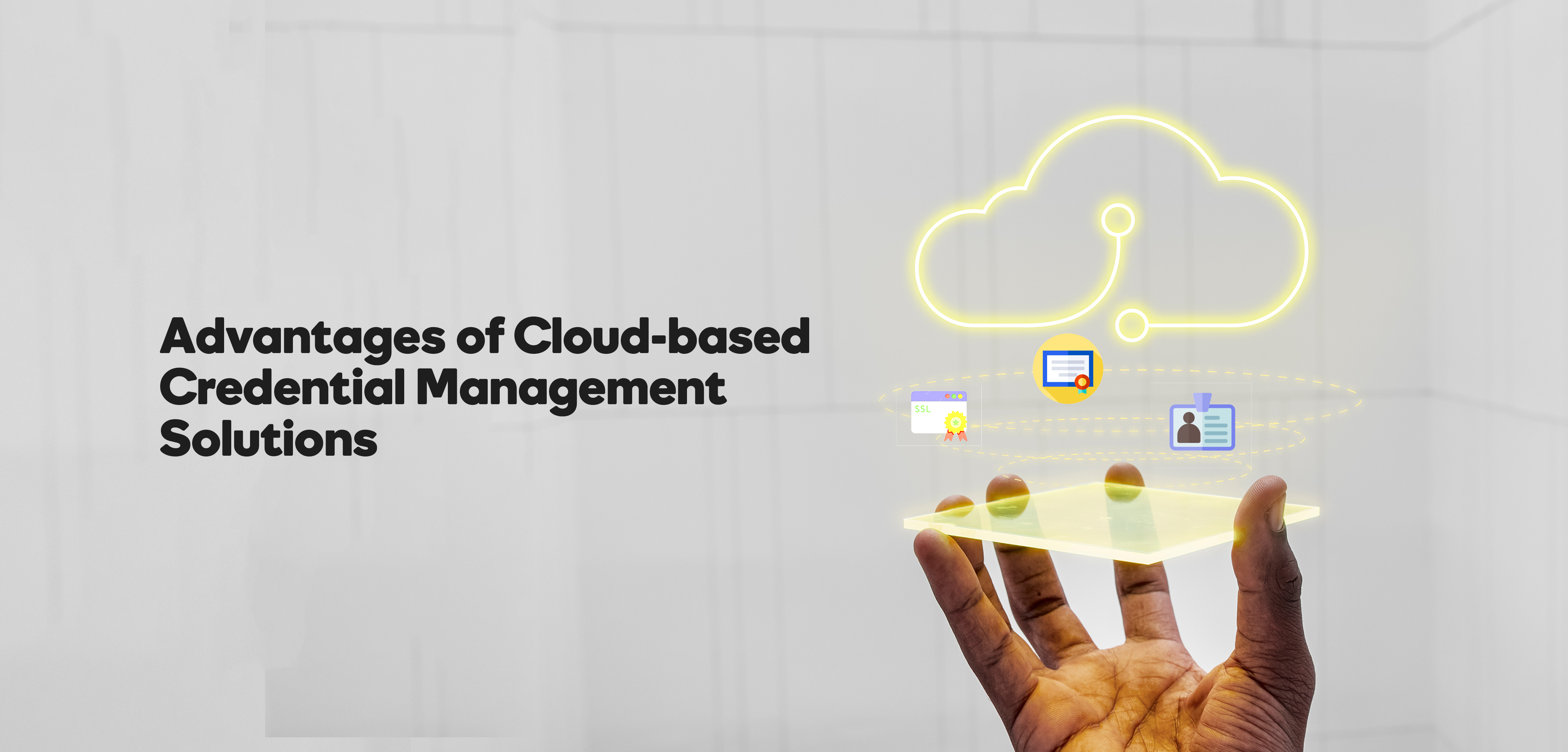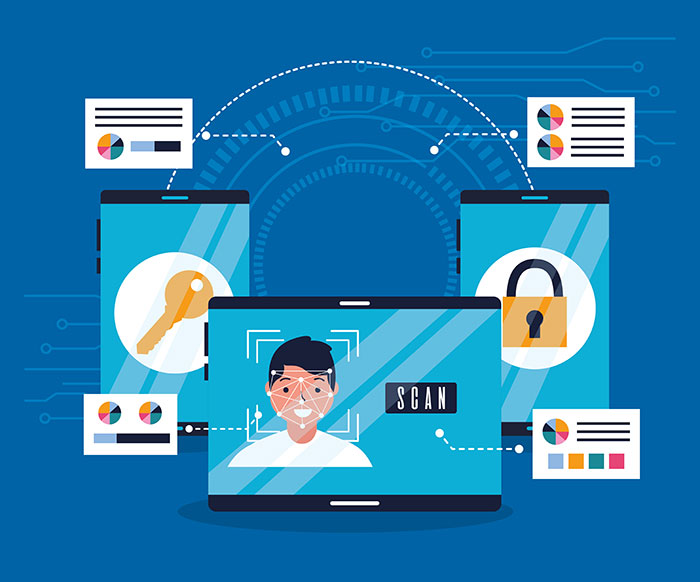The Advantages of Cloud-based Credential Management Solutions
by Gift

When you think about the emergence of The Cloud, it’s been a fantastic journey. For those of us old enough, we can remember when data memory was expensive and then cheap again. We can also remember when the electricity bill was so expensive because of the air conditioning for our expanded servers. Finally, not forgetting our favourite evening chore, switching those drives in the daily backups process.
The Cloud definitely changed our lives and has unleashed a continuous digital transformation journey.
So now think of the server room as our own wallet. We don’t want to miss out on our loyalty points when we buy our shopping or fill up our cars with fuel. We don’t want to miss out on our air miles when we leave the country. We are now gamification addicts, so not getting points for our next free coffee is not an option.
Getting a new job is another life experience where we demonstrate our amazing talents with our educational certificates. Then there are examples where we use our passports, our driving licenses or even our health certificates to verify ourselves.
Through life, we accumulate more and more credentials, but we can’t carry them all with us. Or can we? I guess it really depends on how they are issued in the first place. This is why every provider of credentials has to think about how they provide that credential in a way that it can be consumed and used by their customers.
Here are the top 3 areas that a great Cloud Based Credentialing Management solution should give you:
- Verification: Your credential needs to be created and issued in a way that it can never be faked. That is why you see so many providers now secure their credentials using everything from a basic QR code to securing it on the Blockchain. The Issuer often delivers the same platform to the Verifier, but a closed-loop platform may not be ideal when you’re verifying credentials from multiple sources.
- Smartphone Apps: Just like our coffee cards, in today’s world, we expect that we can carry our credentials around on our smartphones. Some providers can send credentials to our phone wallets. Others create apps that aggregate all the different credentials into a single app. Either way, we need it on our phones. To achieve this, those credentials would also need to be linked to your Digital Identity.
- Access to Data: It’s not just about what’s ON the credential. It’s about what is IN the credential. As an example, if you took an MS Excel course, your credential should tell the world that you can do formulas, charts and pivot tables. By receiving the credential from the Issuer, you should automatically send these micro-credentials in a way that you can use them even though they may not be visible on the certificate itself.
So the next time you are issued a credential, ask yourself whether the experience of using it was as easy as getting points for your free coffee. If it was not, then perhaps it is time to ask yourself whether you are working with the right credential provider.
The Benefits of Collaboration between employers and occupational Health service providers
by Gift

 Occupational health and safety (OHS) is a critical issue for all employers and employees, as it directly impacts the well-being and productivity of the workforce. While employers are responsible for providing a safe working environment, it is often difficult for them to address all health and safety concerns independently. Collaboration between employers and occupational health service providers (OHSPs) can help to improve OHS outcomes and create a safer and healthier working environment.
Occupational health and safety (OHS) is a critical issue for all employers and employees, as it directly impacts the well-being and productivity of the workforce. While employers are responsible for providing a safe working environment, it is often difficult for them to address all health and safety concerns independently. Collaboration between employers and occupational health service providers (OHSPs) can help to improve OHS outcomes and create a safer and healthier working environment.
In this article, we will explore the benefits of collaboration between employers and OHSPs and why it is an important aspect of OHS management.
Improved Communication and Coordination:
Effective communication is key to ensuring that OHS concerns are properly addressed. Collaboration between employers and OHSPs can improve communication and coordination, reducing the risk of misunderstandings and errors. This can help ensure that health and safety issues are dealt with promptly and effectively.
OHSPs can provide valuable input and advice to employers on OHS issues and can help to ensure that employers have access to the latest information and best practices. They can also provide training and education to employees on health and safety issues, helping to increase awareness and understanding of the risks and how to mitigate them.
Improved Data Collection and Analysis:
OHSPs often have access to a range of data and information on OHS issues, which can be valuable for employers. By collaborating with OHSPs, employers can benefit from this information and use it to inform their OHS management strategies. This can help to identify potential risks and develop targeted solutions to address them.
OHSPs can also provide support in analyzing data and identifying trends, which can help employers to prioritize their OHS initiatives and allocate resources more effectively. This can result in a more efficient and effective OHS management system and can help to reduce the risk of workplace accidents and illnesses.
Access to Specialist Expertise:
Employers often face complex and challenging OHS issues and may need access to specialist expertise to address them. OHSPs can provide this expertise, helping employers to find effective solutions to complex OHS problems.
OHSPs can also provide support in developing OHS policies and procedures and can provide training and guidance to employees on how to implement these effectively. This can help to ensure that OHS policies are well understood and effectively applied, reducing the risk of accidents and incidents.
Enhanced Safety Culture:
A collaborative approach to OHS can help to create a positive safety culture where everyone is committed to working together to maintain a safe and healthy workplace. When employers and OHSPs work together, they can promote a culture of continuous improvement where health and safety concerns are regularly reviewed and addressed.
This can help foster a sense of ownership and accountability among employees, who are more likely to take their responsibilities seriously when involved in OHS initiatives. Employers and OHSPs can also collaborate on safety campaigns and other initiatives to raise awareness and encourage employee involvement in OHS.
Cost-effective Solutions:
Collaborating on OHS initiatives can result in more cost-effective solutions, as employers and OHSPs can pool their resources and expertise. This can help reduce the costs of implementing OHS measures and reduce the impact of OHS incidents by preventing them from occurring.
Employers and OHSPs can also collaborate on health and safety audits, which can help to identify areas for improvement and develop cost-effective solutions. This can help to ensure that OHS measures are effective and provide value for money and can also help to ensure that resources are used efficiently.
Conclusion

In conclusion, collaboration between employers and occupational health service providers is an important aspect of OHS management. As such, Seamfix Care, A powerful technology that keeps the Occupational Health Industry thriving, is enabling Employers and OHS to collaborate seamlessly through its various suite of solutions. Seamfix Care helps employers and OHS to prevent accidents and incidents and improve the overall health and well-being of the workforce by ensuring that all worker’s certificates are up to date and providing a platform that enables transparency and eliminates fake Certifications within the industry.


